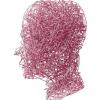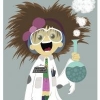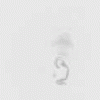My experience could support that milk thistle may beneficial at least in conjunction with other acne treatment since it does have anti-oxidant properties. But if that’s the case so would every other antioxidant out there. OP says she has tried “various detoxing supplements” I would assume that at least some of them would have been antioxidants. If milk thistle is in fact superior to other antioxidants it must have some unique property other antioxidants lack.
Since OP states she gets similar results with NAC my first thought was it could have a correlation with the liver/ glutathione. Her/his liver tests are fine thou. A wild and unlikely guess could be that, maybe the liver does something to combat acne that is not measured in liver tests? That the liver seems fine but still may be malfunctioning in some ways we don’t understand. And that milk thistle/ NAC alleviates that mysterious thing? This is pure speculation on my part and probably wrong.
OP tried “vitamin C&E, l-glutamine, selenium, MSM, SAMe supplementation” which according to OP raises glutathione (GSH), I’m too lazy to verify :-P Here the possible explanation could be that silymarin in milk thistle and NAC maybe are the strongest glutathione raisers? I can’t find any studies that compare Silymarin and NAC to other GSH raisers but I haven’t searched very hard either. Maybe even thou the previously tried weaker supplements do raise glutathione that raise may not be enough to see acne benefits, but with Silymarin/NAC a threshold is reached and acne benefits occur?
Other things one could look into is the effect Milk thistle and NAC specifically has to the skin. I found these but I’m to tired to go through them:
Milk thistle and skin
Topical delivery of silymarin constituents via the skin route
https://www.ncbi.nlm...les/PMC4002699/
The treatment of melasma by silymarin cream
https://www.ncbi.nlm...les/PMC3519762/
Formulation and clinical evaluation of silymarin pluronic-lecithin organogels for treatment of atopic dermatitis
https://www.ncbi.nlm...les/PMC4790491/
Comparison of imatinib, nilotinib and silymarin in the treatment of carbon tetrachloride-induced hepatic oxidative stress, injury and fibrosis
https://www.ncbi.nlm...les/PMC3895503/
Silibinin enhances the repair of ultraviolet B-induced DNA damage by activating p53-dependent nucleotide excision repair mechanism in human dermal fibroblasts
https://www.ncbi.nlm...les/PMC4741848/
N-acetylcysteine (NAC) and skin
Antioxidants and NOX1/NOX4 inhibition blocks TGFβ1-induced CCN2 and α-SMA expression in dermal and gingival fibroblasts
https://www.ncbi.nlm...les/PMC5648211/
Use of oral N-acetylcysteine for protection of melanocytic nevi against UV-induced oxidative stress: towards a novel paradigm for melanoma chemoprevention
https://www.ncbi.nlm...les/PMC2787788/
Topical N-Acetylcysteine Improves Wound Healing Comparable to Dexpanthenol: An Experimental Study
https://www.ncbi.nlm...les/PMC4400934/
Topical N-Acetylcysteine Accelerates Wound Healing in Vitro and in Vivo via the PKC/Stat3 Pathway
https://www.ncbi.nlm...les/PMC4057691/
Effect of Oxidative Stress on Protein Tyrosine Phosphatase-1B in Scleroderma Dermal Fibroblasts
https://www.ncbi.nlm...les/PMC3309078/
Edited by Al4ina, 03 December 2017 - 08:49 PM.


















































